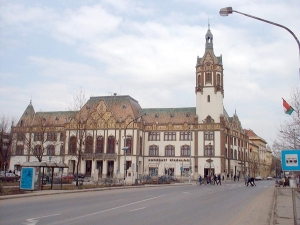Popular destinations nearby
Szeged,
Békéscsaba,
Gyula,
Hódmezővásárhely,
Kecskemét,
Baja,
Bugac,
Kalocsa,
Makó,
Ópusztaszer,
Orosháza,
Akasztó,
Bácsalmás,
Battonya,
Békés
|
Félegyháza was mentioned in a document as early as 1389 under the name "Feledház". After the Turkish rule a new settlement was established in 1743: by the order of Maria Theresa the law court and the prison of Kiskun district was placed here, which is known as Kiskun Museum today. At that time the Baroque old church was built, too. With the development of the town, the number of the inhabitants and that of the impressive buildings grew: the Stations of the Cross, the neo-Classical Swan House built in 1820, which used to be rented by poet Sándor Petőfi's parents and which is the Town Library today. The Town Hall was built in 1912. In the building decorated with Zsolnay ceramics you can find a unique art nouveau banquet hall on the first floor. In the town centre, a statue of St. John of Nepomuk commemorates the period, when the town was resettled after the Turkish rule. In Petőfi square a statue of Petőfi was erected, behind which you can see an ornamental well built in memory of the poet. In Kossuth street a 100-year-old row of plane trees can be seen, which leads to the neo-Classical St. Stephen church built in 1880. According to records Cumans were well-known for their obstinacy and stubborn self-respect. The people living here find it very important to preserve their cultural heritage-despite the difficulties - and to create a friendly atmosphere in the town which can be enjoyed by the locals as well as the visitors who will wish to return to this nice region again. Lodgings in Kiskunfélegyháza: Pictures of Kiskunfélegyháza
|
Kiskunfélegyháza map nagyítása >>
|
|
|
Hungary - Kiskunfélegyháza |
|
|
|
||
|
Thursday, 17. April 2025. - 02:46:51 |
||
